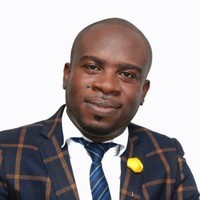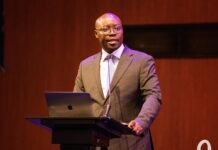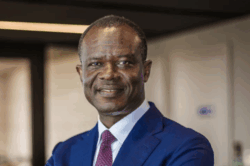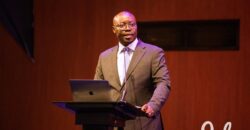Naturopathy is a system of healthcare with a deep history of traditional philosophies and practices, medically trained practitioners and a breadth of natural treatment options to serve patients.

Naturopathy has been part of Germany for centuries. Many of the principles and philosophies of naturopathy originated in Germany and Europe in the 16th and 17th century. The original naturopaths – prior to 1900s – from around the world, were trained by European doctors using hydrotherapy, herbal medicine and other traditional forms of healing. Currently, European countries consider their practice of naturopathy as a system of healthcare that has evolved by incorporating the traditional medicine of each country with the naturopathic principles, theories, modalities and traditions that have been codified in North America. Traditional forms of naturopathic teaching and practice are still common in Europe.
North America is considered the home of modern naturopathy, or naturopathic medicine. Most North American schools are government-accredited and all regions within North America are working toward regulation or licensure (with 50% of Canadian provinces and 38% of all states / regions in the USA regulated). There are strong national and regional naturopathic associations, ongoing naturopathic research and specialized groups and journals to support the practice of naturopathic medicine. North America is credited with codifying the naturopathic principles and for contributing some of the established theories and practices that are now used worldwide.
Throughout its history, naturopathy / naturopathic medicine is introduced into a country when a naturopath / naturopathic doctor that has been trained in North America or Europe moves and takes their skills with them. There is a synthesis of the European or North American training with the traditional systems of medicine in their country. For example, naturopathy was introduced to India after a medical doctor was trained by naturopaths in Europe; two of the respondents from South East Asia indicated that they were originally trained in the USA.
Some of the founding influences:
- The hydrotherapy techniques of Vincent Priessnitz (1799-1851) and Father Sebastian Kneipp (1821-1897) in Europe, and John Harvey Kellogg (18521943) in North America;
- The Thomsonian method of Samuel Thomson (1769-1843) that foreshadowed physiomedicalism, from which some forms of modern phytotherapy emerged;
- The nature cure methods of Dr Louis Kuhne (1823-1907), Dr Arnold Rickli (1823-1926), and Dr Henry Lindlahr (1862-1924) that emphasized healthy lifestyles, sunlight and fresh air, vegetarianism and detoxification;
- homeopathy, derived by Christian Friedrich Samuel Hahnemann (17551843);
- The Eclectic school of medicine of Dr Wooster Beach (1794-1868), which employed botanical medicines;
- The philosophy of vitalism, which maintained that the body has an innate intelligence that strives constantly for health, so that the practitioner’s role is to assist these efforts by cooperating with the healing powers of nature active within the body; schools of manipulative therapies, such as osteopathy, developed by Dr Andrew Taylor Still (1828-1917), and chiropractic, developed by Daniel David Palmer (1845-1913).
In Europe, the naturopathic approach to health care tended to evolve from the hydrotherapy and nature cure practices that had been developed by Priessnitz, Kneipp, Kuhne and Rickli. In North America, Dr Benedict Lust is described as establishing naturopathy in 1902, deriving it from nature cure.

Although there have been historically broad discussions on the principles and practice of naturopathic medicine, there was no formal codification process until 1986, when the American Association of Naturopathic Physicians (AANP) formed a committee that consisted of naturopathic doctors Pamela Snider, Jared Zeff and others. These practitioners spent over three years reviewing the historic data and documents and interviewing over 1,000 people.
In 1989, a definition of naturopathic medicine and the description of the six naturopathic principles was formally codified and accepted by the two North American national naturopathic associations (American Association of Naturopathic Physicians (AANP) and the Canadian Association of Naturopathic Doctors (CAND)).Based on the 2014/2015 global naturopathic workforce survey these principles appear to have international recognition and acceptance.
The naturopathic principles taught in most countries include:
- First, Do No Harm (primum non nocere)
- Healing Power of Nature (vis medicatrixnaturae)
- Treat the Cause (tollecausam)
- Treat The Whole Person (tolletotum)
- Doctor as Teacher (docere)
- Disease Prevention and Health Promotion
- Wellness
Naturopathic Theories
There are a number of naturopathic theories practiced around the world including:
- Humoral Theory
- Therapeutic Order
- Emunctories
- Theory of Complex Systems
Naturopathic Modalities
The naturopathic modalities or therapies used around the world vary by country. Some of the most common naturopathic modalities include:
- Clinical Nutrition
- Botanical Medicine (Herbalism)
- Homeopathic Medicine
- Traditional Chinese Medicine / Acupuncture
- Physical Medicine
- Hydrotherapy – Water Cure
- Prevention and Lifestyle Counselling
- Hygiene Therapy
- Nature Cure
Some naturopathic doctors will have additional training in other natural therapies such as:
- Ayurvedic Medicine
- Prescription Rights
- IV Therapies
- Chelation Therapy
- Minor Surgery
- Colon Therapy
Global Naturopathic Regulation
The statutory regulation of naturopathy, like all professionals, is strongly correlated with educational standards and is influenced by the political landscape in each country and the regulation of other traditional and complementary systems of medicine in the region. Every country or region that has regulation is supported by a professional naturopathic association. Naturopathy is practiced in every world region, spanning over eighty countries. Statutory regulation of the naturopathic profession currently exists in jurisdictions in North America, India, Europe and Latin America. To be a full member of the WNF, associations must support and be working toward regulation. They must also support educational accreditation and advancement of educational standards.
Naturopathic Regulatory Process
The statutory regulation of naturopathy, like all professionals, is strongly correlated with educational standards and is influenced by the political landscape in each country and the regulation of other traditional and complementary systems of medicine in the region. Every country or region that has regulation is supported by a professional naturopathic association. For those countries / regions that do not yet have regulation, the WNF encourages that professional naturopathic associations engage in self-governance activities that protect the public as they work towards regulation.
Overview of Statutory Naturopathic Regulation Globally
The regulation of naturopathic practitioners is diverse. It covers Naturopathic Technicians, Licensed Naturopaths, Diploma in Naturopathy and Naturopathic Doctors. Naturopathic practitioners in Europe are referred to as Heilpraktiker or Naturopaths.
In North America and India, naturopathic practitioners are regulated as Naturopathic Doctors and/or Naturopathic Physicians. In Latin America, regulation exists for both Naturopathic Technicians and Doctors of Naturopathy. This difference reflects the educational differences, yet the foundational philosophy and principles are the same.
Training of naturopathic practitioners
The WHO has a benchmark for Naturopathy education. According to the report, Regulating the practice of naturopathy and preventing practice by unqualified practitioners requires a proper system of training, examination and licensing. Benchmarks for training have to take into consideration the following:
- Content of the training;
- Method of the training;
- To whom the training is to be provided and by whom;
- The roles and responsibilities of the future practitioner;
- The level of education required in order to undertake training.
Naturopathy experts distinguish two types of naturopathic training in function of prior training and clinical experience of trainees.
Type I training programmes are aimed at those who have no prior medical or other health-care training or experience. They are designed to produce naturopathic practitioners who are qualified to practice as primary-contact and primary-care practitioners, independently or as members of a health-care team. This type of programme consists of a minimum of two years of full-time study (or its equivalent) of no fewer than 1500 hours, including no less than 400 hours of supervised clinical training. Acceptable applicants will typically have completed high school education or equivalent.
Type II training programmes are aimed at those with medical or other healthcare training (western medicine, dentistry, chiropraxis, osteopathy, etc) who wish to become recognized naturopathic practitioners. The learning outcomes should be comparable to those of a Type I programme.
Graduates of the Type I programme have to be able to:
- Provide a basic description of the principles and practice of the various disciplines of traditional, complementary and alternative medicine;
- Assess the health of their clients of all ages with skill and accuracy and to communicate this information effectively to their clients;
- Prescribe appropriate treatments involving naturopathic modalities used in accordance with naturopathic principles;
- Recommend traditional medicines for the purpose of treating and preventing diseases and promoting health;
- Prepare traditional medicines in accordance with pharmacopoeia requirements and good compounding and dispensing practices;
- Monitor, evaluate and adapt, when necessary, the naturopathic care of each client;
- Educate both clients and the public concerning the promotion of health and the prevention of diseases;
- Refer clients to other health-care professionals when necessary and appropriate;
- practice ethically and in compliance with the codes and guidelines of the relevant professional organizations as well as the statutes, rules, laws and/or regulations of the licensing or regulatory body.

The Type I programme includes four primary areas of study:
- Basic sciences
- Clinical sciences
- Naturopathic sciences, modalities and principles
- Clinical training and application.
Since some courses and disciplines overlap more than one of these areas, this classification is merely intended to provide a simple categorization of the breadth of courses that are studied.
- Basic sciences include: anatomy, physiology, pathology.
- Clinical sciences include: taking a patient history and clinical assessment; physical examination; first-aid and emergency medicine; hygiene and public health.
- Naturopathic sciences, modalities and principles include: naturopathic history and practice; nature cure; nutrition; hydrotherapy; botanical medicine; homeopathy and tissue salts; Bach flower therapy; stress management and lifestyle counselling; ethics and jurisprudence; optional courses (light and electrotherapy; iridology; soft tissue therapies; aromatherapy; acupuncture).
Clinical training may include preceptorship and supervised clinical training.

Competency in botanical medicine
Competency in botanical medicine requires training in core naturopathic subjects as well as specific botanical medicine subjects. All naturopathic practitioners receive training in the use and compounding of medicinal plants. They are knowledgeable in the identification, storage, compounding and dispensing of herbal remedies. These practitioners should be able to identify the herbal remedies that are most commonly used in their region and demonstrate knowledge of pharmacognosy and good compounding and dispensing practices. For each of these herbal medicines, they should be able to state the indications, dosages, contraindications, potential adverse effects, toxicity levels and potential interactions between herbal remedies, pharmaceutical products or foods. Practitioners should comply with requirements for adverse-reaction reporting.
By the end of the training programme, students should have the competency in the area of botanical medicines and:
- have a basic knowledge of botany; have an understanding of the taxonomy and morphology of botanical medicines; be able to identify botanical medicines, both growing and dried, relevant to their level of practice;
- be able to classify plants according to their action – e.g. as astringents, demulcents, diaphoretics, etc. – and relate the action of an individual plant to the indications for its use;
- understand the pharmacological action of botanical medicines;
- know in detail the dosage range and toxicities of the botanical medicines studied in their training programme;
- know in detail the contraindications and incompatibilities of the botanical medicines studied in their training programme;
- be able to list potentially adverse botanical-botanical, botanical nutraceutical, botanical-pharmaceutical and/or botanical-food interactions for the botanical medicines used in their practice;
- have awareness of the relative merits of simple and/or complex botanical medicine preparations;
- have an understanding of good compounding and dispensing practices appropriate to their level of practice;
- be able to report adverse reactions to the appropriate authorities.
Type II programme
The Type I programme can be adapted to a Type II programme which is designed to enable other health-care professionals to obtain additional qualification as a naturopathic practitioner. Accordingly, the duration and syllabus of the Type II programme will depend on prior education and experience, and will vary from student to student. However, the duration should be no fewer than 1000 hours, including no fewer than 400 hours of supervised clinical training and the syllabus will be tailored to include any course content from the Type I programme that had not previously been studied by the student
Saftey issues
The community of naturopathy practitioners recognizes a number of contraindications associated with naturopathic modalities. These contraindications may be associated with the modalities themselves rather than the specifically naturopathic use of these treatments. As naturopathy includes interventions from acupuncture, nutrition, physical therapies, counselling, and other practices, it is not practical to provide a comprehensive list of contraindications in this document. Instead, it is recommended that reference be made to the guidelines of the relevant health-care practices regarding contraindications to interventions also included in naturopathy. These may include WHO and WHO Regional Office publications, such as the WHO Guidelines on basic training and safety in acupuncture.
The foremost principle of naturopathy – primum non nocere – or “first do no harm”, demands that naturopathic practitioners place patient safety first. Properly trained naturopathic practitioners know the limitations of, and the contraindications to, the products and modalities they use. For example, a properly trained naturopathic practitioner will immediately refer a patient when circumstances indicate that a patient’s safety and well-being will be put at risk if that patient is not treated by a different health-care practitioner. Referral is also indicated when naturopathic treatment is not likely to assist the patient or is not producing the anticipated positive result.
Referral to other health professionals is specifically indicated when:
- a life-threatening situation occurs or is suspected;
- the diagnosis, assessment or treatment of a specific condition is not within the scope of naturopathy;
- the diagnosis, assessment or treatment of a specific condition requires expertise or technology that is not readily available to the naturopathic practitioner;
- a diagnosis cannot be confirmed with the training and technology that is available to the naturopathic practitioner;
- the response to treatment is not adequate, or inexplicably unsatisfactory, or the patient’s condition deteriorates;
- a second opinion is desired.
Such referrals may reduce the risk of indirect adverse effects, which can occur when an inappropriate treatment is administered; when proper treatment is delayed or interrupted; when a misdiagnosis is made; or when naturopathic therapies are used when not indicated.
Global Naturopathic Regulation
In an article tackled by Iva Lloyd, assess the regulation of naturopathic practice around the globe. According to her assessment, Naturopathy is practiced in more than 80 countries, spanning every world region. Regulation of the naturopathic profession currently exists in jurisdictions in North America, India, Europe, and Latin America. The World Naturopathic Federation(WNF) is a mother organization championing naturopathic education. To be a full member of the World Naturopathic Federation (WNF), naturopathic associations must support and be working toward regulation. They must also support educational accreditation and high educational standards. Nyarkotey College of Holistic Medicine apply for full membership to join the global elite group.
Regulatory Process
The regulation of naturopathy, like all professions, is strongly correlated with educational standards and is influenced by the political landscape in each country. Because naturopathy is a medical profession, its regulation also depends on the regulation of other traditional and complementary systems of medicine in the region. Every country or region that has naturopathy regulation is supported by a professional naturopathic association. For those countries/regions that do not yet have regulation, the WNF encourages professional naturopathic associations to engage in self-governance activities that protect the public as they work toward regulation.
Overview of Global Naturopathic Regulation
The regulation of naturopathic practitioners is diverse. It covers Naturopathic Technicians, Licensed Naturopaths, Diploma in Naturopathy, and Naturopathic Doctors. Naturopathic practitioners in Europe are referred to as Heilpraktiker or Naturopaths. In parts of North America and in India, naturopathic practitioners are regulated as Naturopathic Doctors.
In Latin America, regulation exists for both Naturopathic Technicians and Doctors of Naturopathy. This difference reflects the educational differences, yet the foundational philosophy and principles are the same. The following is a summary of the global regulation of naturopathy, with links to country-specific regulations and organizations.
Africa
Naturopathy is practiced in at least 11 countries in Africa. Of those, 2 have regulation. The practice of naturopathy in the Democratic Republic of Congo falls under the Decree of 1952, which regulates the practice of medicine and grants exemplary status for traditional medicine practitioners, which includes naturopaths.
In South Africa, naturopathy has been regulated since 1982 under the Allied Health Professions Act. The professions included in this regulation include Ayurveda, Chinese Medicine and Acupuncture, Chiropractic, Homeopathy, Naturopathy, Osteopathy, Phytotherapy, Therapeutic Aromatherapy, Therapeutic Massage Therapy, Therapeutic Reflexology, and Unani-Tibb. Regulation of naturopathy requires 3 years of basic medical sciences with a 2-year specialization in Naturopathy from the University of the Western Cape.
Ghana Case Study
Interestingly, Ghana was omitted from the assessment. As it stands now, the practice of Naturopathy and other forms of alternative medicines have not been paid much attention unlike Traditional Medicine which is practice and regulated based on Traditional Medicine Practice ACT 575.
However, the practice of Naturopathy and other alternative forms of remedies is also recognized and regulated based on Ministerial directives. Hence, The Traditional Medicine Practice Council also regulates Naturopathy and other alternative remedies. The council is now Traditional and Alternative Medicine Practice Council and located at the Ministry of Health.
The council issues licenses and certifications to all who apply to practice Naturopathy and others. The council has recently also modified the acceptable alternative practices on their application form. Titles for practitioners are award based on ACT 575. For instance, alternative medicine practitioners have the title ALT/DR, Traditional Medicine Practitioner have the title T/DR and many others. Others are prescribed titles based on their level of education.
There is also a new pending Traditional and Alternative Medicine bill 2018 to officially ushered into the system alternative medicines. I believe, it is time for the passage of this new bill. However, the Nyarkotey College of Holistic Medicine training program should be used as pilot study in Ghana.
The college current two-year program in Naturopathy is based on the World Health Organization(WHO) benchmark of Naturopathy training which recommends less than 1,500 hours of teaching and 400 hours of clinical supervision. The College two-year program and clinical supervision is 1,696 hours which is above the WHO benchmark excluding project work. The Nyarkotey College of Holistic Medicine four-year program will have total hours over 4,000 hours.
The Case in Nigeria
In Nigeria, the practice of Alternative Medicine is regarded as a second class profession and is under the purview of the Medical and Dental Council of Nigeria. The Mission Statement reads: “To regulate the practice of Medicine, Dentistry and Alternative Medicine in the most efficient manner that safeguards best healthcare delivery for Nigerians” underlies these Mandates. Hence, the council provides the Supervising and controlling the practice of homeopathy, and other focus of alternative medicine (naturopathy, acupuncture and osteopathy)
Asia
In India, naturopathy has 2 levels of regulation: education, regulated by the health university of the respective state; and practice, regulated by the State AYUSH Department, which registers practitioners. Currently, the Bachelor of Naturopathy and Yogic Sciences (BNYS) medical degree course is conducted in 19 schools based out of 7 states of India and regulated by the respective state governments. MD (Naturopathy) is a postgraduate full-time 3-year course for BNYS graduates only. The MD program was started in 2014 and is offered currently by 3 schools in India.
The National Accreditation Board for Hospitals and Healthcare Providers (NABH), an institutional member of the International Society for Quality in Health Care (ISQUA), has recently developed accreditation standards for naturopathy hospitals and clinics in association with the Ministry of AYUSH. India’s intra-profession operational collaboration between the different systems of traditional medicine within its country is a model worth noting. In other areas of Asia that practice naturopathy, such as Nepal, there is currently no regulation.
- Ministry of Ayurveda, Yoga & Naturopathy, Unani, Siddha, Homoeopathy (AYUSH)
- National Institute of Naturopathy (NIN)
- Central Council for Research in Yoga and Naturopathy (CCRYN)
- National Accreditation Board for Hospitals & Healthcare Providers (NABH)
Eastern Mediterranean
Naturopathy is fairly new to the eastern Mediterranean region. While 7 countries in the region have naturopathic practitioners, there are currently no naturopathic regulations in the eastern Mediterranean.
Europe
In Europe there are over 30 countries that practice naturopathy, yet only 3 currently have regulation. There are a couple of regulatory challenges that are common in Europe. First, some countries include the treatments common to Traditional and Chinese Medicine, T&CM, under the regulation of medical doctors, hence limiting and in some cases restricting naturopathic practitioners and other T&CM practitioners from practicing in their country. Second, some countries such as Hungary have chosen to regulate modalities (specific treatments) of medicine vs regulating systems of medicine. The WNF discourages this practice because it decreases the attention and protection of the fundamental principles that are part of every system of T&CM.
- Germany:Naturopathic practitioners in Germany are regulated as Heilpraktiker and have been regulated since 1939, with the latest updates in December 23, 2017. Regulation is based on passing a State exam.
- Switzerland:In Switzerland they recognize 4 specific therapeutic fields: Ayurvedic medicine, homeopathy, Traditional Chinese Medicine (TCM), and Traditional European Naturopathy (TEN).
- Portugal:Naturopathy is regulated under the non-conventional medicine regulations that include acupuncture, chiropractic, osteopathy, phytotherapy, naturopathy, Traditional Chinese Medicine, and homeopathy. The 7 professions are regulated by Laws 45/2003 of 22 August and Law 71/2013 of 2 September.
Latin America
The WNF is aware of 23 countries in Latin America that practice naturopathy. Three of those countries currently have regulation. Many of the countries in Latin America that practice naturopathy does so because naturopathic practitioners brought naturopathy back to their countries after graduating from naturopathic educational institutions in North America.
- Brazil:Recognition of naturopathy is through the Ministry of Health under Integrative Complementary Medicine. In Brazil the competencies on a profession are divided: the ministry of labor recognizes the occupation; the ministry of education recognizes the formation; and the ministry of health recognizes and regulates the practice. The ministry of health works through the national health council within the Public Policies of the System National Health, but it is up to the National Congress to legislate on the regulation of the professional.
- Chile:Regulation in Chile is based on passing a standardized exam. There are 2 different designations—Naturopatas and Holistic Naturopath. A Holistic Naturopath is a practitioner who has completed training in naturopathy, acupuncture, and homeopathy.
- Puerto Rico:Puerto Rico has been regulated since 1997. It is the only jurisdiction that has distinct regulation for both naturopaths and naturopathic doctors.
North America
In both Canada and the United States, naturopathic practitioners are considered primary care providers and are regulated as naturopathic doctors. Regulation is based on graduation from an accredited 4-year naturopathic medical program and a passing score on an extensive postdoctoral board examination for licensure or registration. Naturopathic doctors must also fulfill annual mandatory continuing education requirements and have a specific scope of practice as defined by their provincial/state regulations.
Canada
Naturopathic regulation has existed in Canada since the 1920s. There are currently 5 provinces that have full regulation and 1 province that has title protection. Three other provinces are in the process of regulation.
- Regulatory College for British Columbia
- Regulatory College for Alberta
- Saskatchewan regulations
- Manitoba regulations
- Regulatory College for Ontario
- Nova Scotia regulations
In Canada, the regulatory authorities regulating the practice of naturopathic doctors formed the Canadian Alliance of Naturopathic Regulatory Authorities (CANRA). The aim of the alliance is to foster collaborative and cooperative opportunities to improve the ability of its members to regulate their respective members in the public interest.
United States
Many states were regulated between the 1920s and 1950s, but due to sunset laws most lost their regulation. There has been a tremendous regulatory effort in the United States since the 1980s and currently there are 20 states, the District of Columbia, and the United States territories of Puerto Rico and the United States Virgin Islands that have licensing or registration laws for Naturopathic Doctors. Regulation is currently pending in another 6 states.
- Alaska regulations
- Regulatory College for Arizona
- Regulatory College for California
- Regulatory College for Colorado
- Regulatory College for Connecticut
- Regulatory College for the District of Columbia
- Regulatory College for Hawaii
- Regulatory College for Kansas
- Maine regulations
- Regulatory College for Maryland
- Regulatory College for Massachusetts
- Regulatory College for Minnesota
- Regulatory College for Montana
- Regulatory College for New Hampshire
- Regulatory College for North Dakota
- Regulatory College for Oregon
- Regulatory College for Pennsylvania
- Regulatory College for Puerto Rico
- Regulatory College for Rhode Island
- Regulatory College for Utah
- Regulatory College for Vermont
- Regulatory College for Washington
In the United States there is also a Federation of Naturopathic Medical Regulatory Authorities (FNMRA) that coordinates the efforts of all the regulatory bodies.
Western Pacific
There are at least 8 countries in the western Pacific region that practice naturopathy. Although there are no formal regulations on naturopathic practice in Australia and New Zealand, the 2 countries in the western Pacific that have been practicing naturopathy since the early 1900s, there are also no restrictions. Naturopathy in Australia and New Zealand is covered by private insurance.
In Australia, in lieu of statutory regulations, an independent self-regulatory body that mirrors the standards of government regulations has been established. The naturopathic organizations are also active in self-governance as demonstrated by the standards of practice outlined on the ARONAH website.
The table below summarizes the regulation of naturopathy around the globe, including links to country-specific regulations and national organizations.
Conclusion
In conclusion, I think the healthcare system in Ghana needs a total review post covid 19 as the pandemic has expose the big gap in the industry. We should embrace a friendlier healthcare approach as in the case of Chinese integrative approach to this pandemic. The Chinese health system embrace both conventional and alternative remedies for better quality of life. At Nyarkotey College of Holistic Medicine, we are ever ready to partner Medical Schools and all other allied health institutions for betterment of the healthcare industry. We are open for further discussions and changes as well.
Nyarkotey College of Holistic Medicine, accredited by the Ministry of Health Traditional and Alternative Medicine Practice Council is leading the revolution in the Natural Medicine industry and believe that, health is holistic and it is time for national frame work in naturopathic medicine practice and education to complement conventional healthcare. We also believe that, health is not about competition but collaboration.

Dr. Raphael Nyarkotey Obu, is an honorary Professor of Holistic Medicine-Vinnytsia State Pedagogical University, Ukraine, president of Nyarkotey College of Holistic Medicine and currently, LLB law Student. He is the formulator of FDA approved Nyarkotey Hibiscus Tea for Cardiovascular Support and wellness, Men’s Formula for Prostate Health and Women’s Formula for wellness. 0241083423/0541234556










